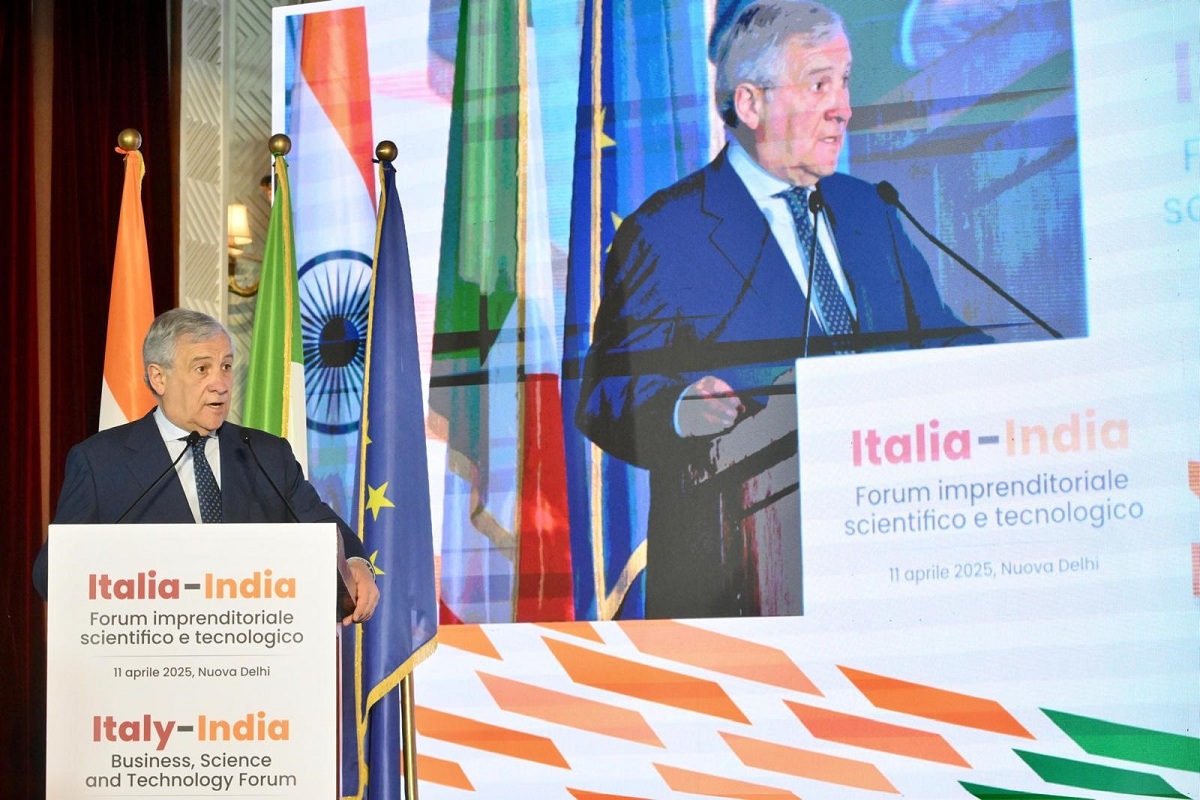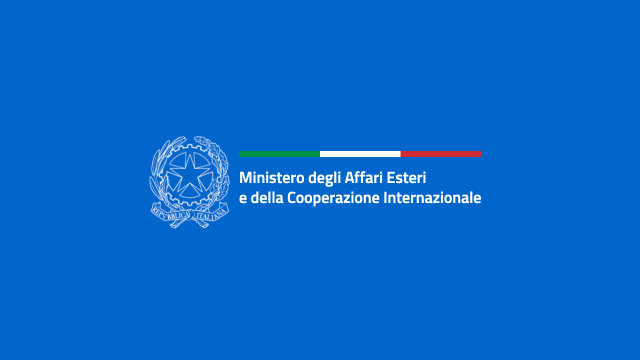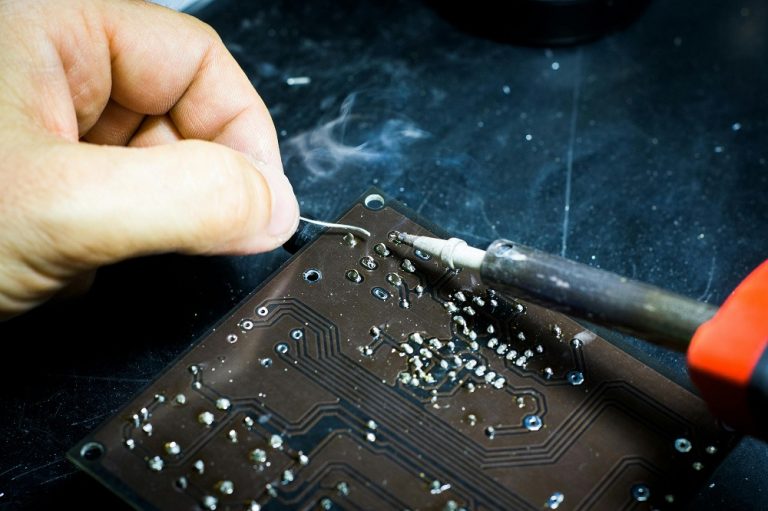The new Action Plan for Italian exports to non-EU markets, promoted by the Ministry of Foreign Affairs and International Cooperation (MAECI), identifies the Asia-Pacific as one of its key strategic axes. With the ambitious goal of increasing Italian exports to EUR 700 billion, India –one of the most dynamic and globally significant emerging economies – is an essential partner for strengthening the economic partnership.
India is a key market, rich in opportunities for Italian companies, thanks to a young and growing population and public policies geared to openness and investment. India is also poised to become a central player in global economy, not only as a destination for exports and direct investment, but also as a regional hub for re-exporting to neighbouring markets. Against this backdrop, over the last ten years the Indian government has adopted policies aimed at attracting foreign capital, with foreign direct investment (FDI) amounting to approximately EUR 710 billion over that period.
Data and prospects
In 2024, Italian exports to India reached EUR 5.2 billion (+1% compared to 2023), placing the country fifth among Italian outlet markets in the Asia-Pacific region, accounting for 9.8% of total regional exports. Italian exports to India are characterized by a high degree of sector diversification: machinery and equipment (40.2%), chemicals (11.5%), computers, electronic and electrical equipment (10.3%), base metals (7.9%), and rubber and plastic products (4.8%). The goal for the future is to increase trade beyond the current EUR 14.2 billion and encourage further bilateral investment, expanding the number of over 800 Italian companies already present in the country, particularly in the Delhi-Gurgaon, Mumbai-Pune, Chennai, and Bangalore areas.
The Italy-India Business, Science, and Technology Forum, held in New Delhi on 10-11 April, 2025, is to be seen in this context. It was attended by 730 delegates (250 of whom were Italian), 484 companies (117 Italian ones), and over 400 B2B meetings were organized. The Forum focused on high-tech sectors: industry and agriculture 4.0, infrastructure, sustainable mobility, renewable energy, advanced technologies, aerospace, security, start-ups, and scientific research.
The New Delhi event was followed by a second business forum in Brescia on 5 June, 2025, held on the occasion of the Italy-India Strategic Economic Partnership.
The event marked a further strengthening of the economic ties between India and Italy.
Ministers Tajani and Goyal opened the business forum at the Santa Giulia Museum to identify the most promising areas for the development of bilateral economic cooperation.
The decision to hold the meeting in Brescia also stems from the strong trade between Lombardy and India, which has grown by over 10% in the last year. Forty percent of total trade between Italy and India passes through the region.
Continuing along the lines of the similar event held in New Delhi in April, the Bilateral Business Forum in Brescia brought together over 400 participants, including companies, institutions, and trade associations, to explore opportunities in four areas: Industry 4.0; transportation; energy transition and circular economy; space. The event also included B2B sessions, with approximately 170 meetings held between Italian and Indian companies.
The large Indian delegation also had the opportunity to meet and visit companies in the Brescia area, coordinated by Confindustria Lombardia and Confindustria Brescia.
Both events, inaugurated by the Deputy Prime Minister and Minister of Foreign Affairs and International Cooperation, Antonio Tajani, are part of the many politically-led business missions on his agenda, as part of the “Growth Diplomacy” strategy he has initiated at the beginning of his term of office.
The Export Plan
At the institutional level, dialogue between the two countries was strengthened with the adoption, in November 2024, of a Joint Italy-India Action Plan 2025-2029, which defines a clear roadmap for strengthening the economic and industrial partnership. Many operational initiatives are planned to support the internationalization of Italian companies in India, demonstrating a structured and multi-level commitment.
These include trade fairs and business missions promoted by the Italian Trade Agency (ITA), which, with an investment of EUR 1 million, aim to facilitate meetings between Italian companies and local partners, thus creating concrete opportunities for collaboration.
These initiatives are supported by business matching programs developed both by ITA and through the Cassa Depositi e Prestiti (CDP) platform, as well as financial instruments dedicated to international expansion. In 2025, CDP has launched its first merger and acquisition transaction in India, investing EUR 114 million in the automotive sector, marking a significant step in industrial cooperation.
SACE, for its part, implemented a powerful local currency “Push Strategy” for an additional EUR 200 million, focused on strategic sectors such as renewable energy, energy, infrastructure, and the steel industry. Finally, SIMEST launched a series of subsidized financial instruments and, in April 2025, opened a representative office in India, a concrete sign of its commitment to permanently strengthen the Italian system’s presence.
The most promising sectors
Reaffirming Italian companies’ interest in India, over the last six months Italian investment in India has exceeded EUR 500 million, distributed across production plant openings, technology centre, memoranda of understanding, acquisitions, and new commercial contracts. India, for its part, positions itself as a strategic industrial hub in several high-potential sectors, where Italian companies can strengthen their positioning through technological solutions, expertise, and structured collaboration with local partners.
In the agri-industrial sector, Italy – a global leader in agri-mechanical technologies -is called upon to play a leading role in the agricultural modernization programs launched by the Indian government, which focus on precision agriculture, sustainable mechanization, and advanced irrigation methods. Opportunities also include food processing, temperature-controlled logistics, and digital traceability systems.
In the railway sector, forecasts for 2026 point to a 157% increase in freight traffic and a 25% increase in demand for rolling stock, while passenger traffic will grow by 30% by 2031. The National Rail Plan 2030 mobilizes resources to the tune of 107 billion dollars, and the Amrit Bharat Station Scheme envisages the renovation of over 1,200 stations with investment exceeding 3 billion. Italian companies can enter the supply chain through supplies, safety technologies, and smart mobility solutions. In telecommunications, full openness to FDI, reduced licensing costs, and the liberalization of radio spectrum have fostered quick market expansion. Data consumption has grown from 61 MB per user in 2014 to 18.4 GB in 2024. In this area, Sparkle (TIM Group) has expanded its operations in India thanks to a strategic partnership with Airtel, in parallel with the activation of the Blue-Raman submarine cable, with an initial capacity of over 25 Tbps.
In the renewable energy sector, India is among the top five countries in the world for wind and solar capacity installed, and aims to reach 500 GW by 2030. The government is actively supporting the sector’s growth to reduce energy dependence and reduce emissions. Between April 2020 and September 2024, foreign investment in renewables exceeded 19.9 billion dollars, and India is well on its way to becoming a global hub. Foreign investment in the renewable energy sector exceeded 19.9 billion dollars, positioning India as a potential global hub in this field.
In the ports and logistics sectors, India intends to become a crucial hub for trade between Europe, Africa, and Asia. The Sagarmala 2030 program envisages 576 infrastructure projects worth approximately EUR 95.7 billion. In 2024, Indian ports handled 1.629 million tons of cargo, with globally competitive customs clearance and container handling times.
The aerospace sector is also experiencing strong growth, expected to grow from 8 to 44 billion dollars by 2040. An Italian Trade Agency (ITA) mission with companies in the sector is planned for this autumn in India to initiate more structured bilateral cooperation.
With specific reference to innovation, Italy has proposed the creation of a centre dedicated to collaboration between start-ups and universities in Bangalore, the heart of the Indian ecosystem. With over 160,000 registered start-ups, India is the third-largest ecosystem in the world. According to estimates, this sector will contribute approximately 1 trillion dollars to the national economy by 2030.
The Free Trade Agreement
The Free Trade Agreement between the European Union (EU) and India is at an advanced stage of negotiation and could be concluded by the end of the year. The agreement would further boost bilateral trade growth, removing tariff barriers and creating an integrated market of over 2 billion consumers, equivalent to 20% of global GDP. In 2023, the EU was India’s largest trading partner, with EUR 124 billion in trade, accounting for 12% of India’s foreign trade. High customs duties, however, still hinder European companies’ penetration of the Indian market. The EU institutions aim to facilitate access for cars and alcohol, while India calls for greater liberalization for textiles, pharmaceuticals, and visas. A balanced trade agreement would open up new prospects for Italian companies, fostering deeper economic integration between Europe and India.
Italy and India: A Future of Opportunities
Interview with Antonio Bartoli, Italian Ambassador of Italy to India
In light of the Government’s Italian Export Action Plan and the Guide to Opportunities for Italian Companies drafted by your Embassy, which sectors, in your opinion, should be considered by a company interested in investing in India?
India is one of the most dynamic economies in the world. Over the last decade (including the Covid period), it has recorded annual growth rates consistently above 6%. This growth rate was up 6.5% in the financial year that just ended (spring 2024-2025), and even increased by 9.2% in the previous year. It has a vast potential domestic consumer market, a median age of approximately 28, and entrepreneurs focused on digital, IT, and innovation. The Indian government aims to create jobs and attract capital, technology, and expertise from abroad, including Italy, to strengthen the national industrial base. At the Delhi Business, Science and Technology Forum in April, and in the subsequent Growth Forum held in Brescia on 5 June, we focused on strategic, high-value sectors where there are many business opportunities for our companies: Industry 4.0; automotive and machinery (as much as 40% of our exports); precision agriculture (to develop collaborations in the food processing, advanced packaging, and cold chain supply chains): infrastructure and transportation (for which the Indian government allocates approximately 130 billion dollars annually); renewable energy (with a particular focus on recycling, green technologies, and industrial waste processing), as well as space and new technologies, in view of the opening of an Italian centre in India to foster dialogue between the key components of our innovation ecosystems, such as start-ups, companies with international reach, universities, and research centres. In Brescia, Indian Minister of Commerce and Industry Goyal launched the proposal to create an industrial district of Italian excellence in India, and we intend to organize sector-specific business missions to foster collaboration and integration between the two countries’ production chains.
In your opinion, what is the value added of Made in Italy products in India?
In India, Italian brands are appreciated for their reliability and quality. Here, too, Made in Italy is synonymous with taste and originality. From design to fashion, from food and wine to tourism. In clothing, for example, Prada, Armani, and Gucci are strengthening their presence through direct stores and local collaborations. In furniture, Italian know-how is establishing itself in residential complexes and hotels in major cities like Mumbai, Delhi, and Bangalore. This is also the reason why we organized a presentation of the Milan Furniture Fair to Delhi, and we will organize events dedicated to Italian Fashion Days within the year.
Currently, the main buyers of Italian products are a middle-to-upper class of Indians, numbering at least 10 million people. However, the country’s growing per capita income and the likely conclusion of a free trade agreement between Europe and India could broaden the consumer base for Italian goods and products, helping to grow and rebalance trade and investment (including in the agri-food sector, currently penalized by high tariff and other barriers). The Italian Cuisine Week in India and the preview of the Vinitaly trade fair in India were a resounding success in Delhi. The goal is to do even better.
Can you tell us about the Indian government’s projects and policies that could open up business opportunities for Italian companies?
India is determined to establish itself on the global market. The International Monetary Fund predicts it will surpass Japan by the end of this year, thus becoming the world’s fourth-largest economy, and Germany by 2027, thus becoming the third-largest economy after the United States and China. This year alone, the government has allocated approximately 570 billion dollars in public spending. The government’s Make In India initiative, launched in 2014, aims to stimulate industry and innovation, making the subcontinent a global manufacturing hub. Over the years, this project has turned into ambitious investment programs, tax breaks, and lines of financing for companies, for example in infrastructure and transportation. India builds 15 kilometres of new railways and 30 kilometres of new highways every day, and has 234 new ports and 50 new airports in the pipeline over the next five years. Italian companies are well-positioned to offer a quality contribution in digitalization and traffic monitoring, components, signalling, and engineering consultancy.
India’s renewable energy and sustainability targets are equally ambitious: 50 wind farms and 30% electric vehicle use by 2030; 500 GW of energy capacity from non-fossil fuels; and 8 billion dollars in green hydrogen investment over the same period. Not to mention the Digital India initiatives, for the digitalization of public and private services, greater connectivity, and bureaucratic streamlining and simplification; the PLI Scheme (Production Linked Incentive), which provides incentives for local production in the electronics, pharmaceuticals, biotechnology, and high-tech agriculture sectors; and the Smart Cities Mission, to develop 100 smart and sustainable cities across India. This opens up huge opportunities for Italian companies specializing in green technologies, energy efficiency, urban planning, and waste management.
Can you explain the opportunities that would arise from an India-EU free trade agreement?
The European Union and India are working on a free trade agreement (FTA) that could truly revolutionize trade relations between the two blocs. Such an agreement would significantly facilitate Italian companies’ access to the vast Indian market, thanks primarily to reduced customs duties. Just think about sectors such as luxury goods, fashion, or the agri-food supply chain, currently hindered by tariffs as high as 150% – in the case of wine, for example. We could export at significantly lower costs.
Another key aspect of the agreement is make foreign direct investment (FDI) easier, in terms of greater legal protection and transparency for Italian companies wishing to operate in India, less bureaucracy, and greater security for joint ventures and local collaborations. The agreement could lead to regulatory standardization between the two markets, thus reducing the technical barriers that often hinder the entry of Italian products and capital into India. There would be fewer certification issues and easier integration into local distribution channels. Finally, in the services sector, Italian companies specializing in industrial design, technical consulting, and financial services would face fewer obstacles in operating in India. Technological innovation would also benefit, with the possibility of direct collaborations in emerging fields such as Artificial Intelligence, blockchain, and fintech.
Can India be considered a gateway to other markets?
India is not just a major destination market, accounting for one-sixth of global population. The country is a gateway to fast expanding economies. Its strategic geographic position places it at the centre of a crossroads spanning the Middle East, Central Asia, Southeast Asia, and even East Africa. Italy and India are both natural terminals of the common Indo-Mediterranean area. The corridor is a contemporary version of routes that existed as early as two thousand years ago, when Augustan Rome and India exchanged coins and spices. The expansion of roads, ports, and railways nationwide is therefore consistent with India’s push for the IMEC project, which Italy also strongly supports. Together, we want to strengthen infrastructure and connectivity between two hubs of global economic wealth, to enhance the exchange of goods, data, ideas, and talent. With the mobility agreement signed by the two governments, we can in fact bring qualified and skilled staff to Italy, ranging from nurses to Indian engineers. This is also an opportunity for our companies.
How present is the Italian system in India?
The companies that decide to enter the Indian market or strengthen their presence there are not alone. The Embassy, three Consulates General, ITA, SACE, SIMEST, and a highly proactive Italian Chamber of Commerce are tasked with supporting them and providing them the necessary support throughout all phases of internationalization. We provide our local knowledge, ongoing assistance in liaising with Indian counterparts, as well as financial, insurance, and consulting tools. Through the Italian System, Italian companies can mitigate investment risks and gain easier access to the Indian market.
A collaboration protocol between SIMEST, CDP, and the Investindia agency will foster mutual investment. ITA, with two offices in Delhi and Mumbai, will continue to promote Italian companies in the country’s main trade fairs and supply chains. The Embassy in Delhi will enhance its staff with a space attaché, and the Consulate General in Bangalore with a new scientific attaché. It will be a synergistic initiative, with a focus on the start-up and innovation sectors.
In your opinion, are there any local characteristics of which a foreign company should be aware?
Three come to mind. The first concerns cultural specificities, resulting from the country’s profound diversity, including language diversity. The second has to do with the country’s bureaucratic dynamics and specific regulations. India, even in business terms, is a complex mosaic and not always easy to understand. It is therefore necessary to approach it with patience, preparation, and a medium- to long-term perspective. Finally, building a network of contacts and trusting relations with local partners and Italian institutions already present in the country is essential, especially at the beginning. This approach facilitates not only market entry but also medium-term investment prospects. Of the approximately 800 Italian companies present, almost half have a production site in India. Several of them have opened new factories and plants – the last two only in the first half of June. Since the beginning of 2025, investment made or announced by Italian companies has reached nearly half a billion euros. This is a sign that, despite the challenges, Italian companies are confident in the opportunities of this fast growing and changing market.






